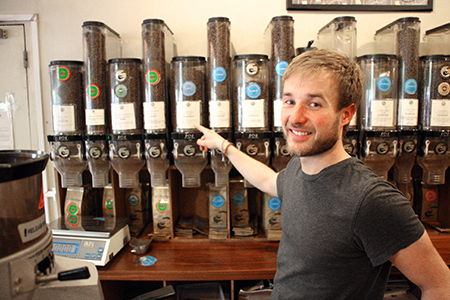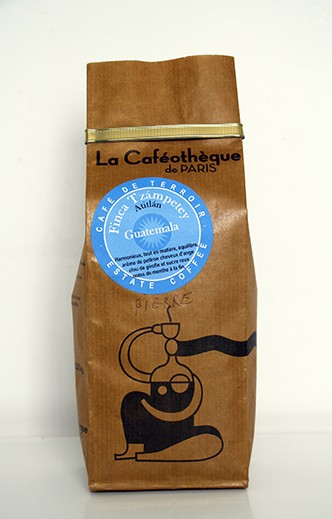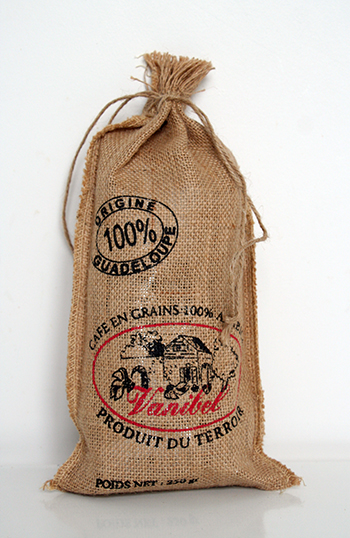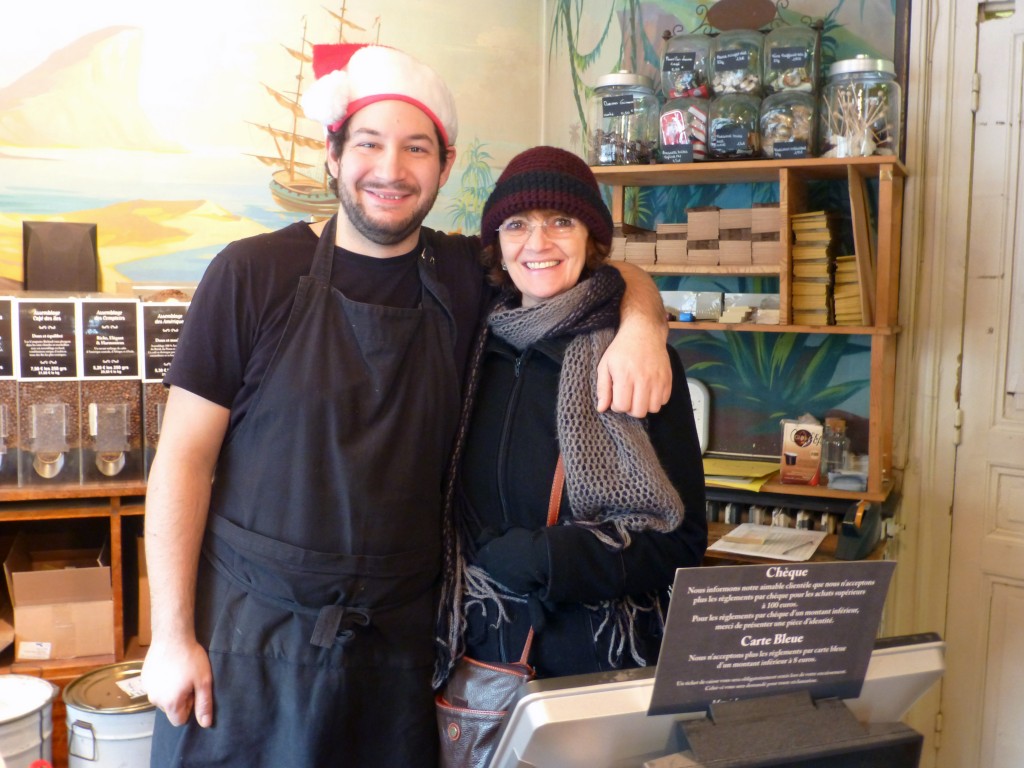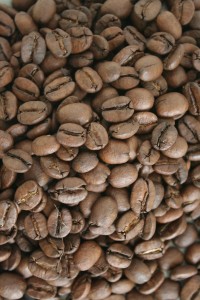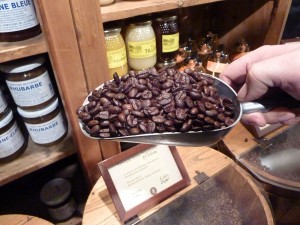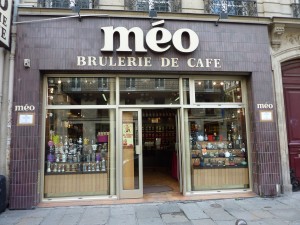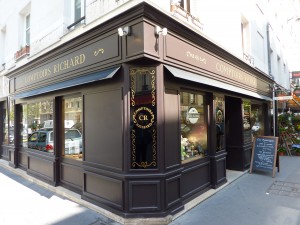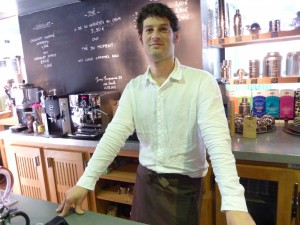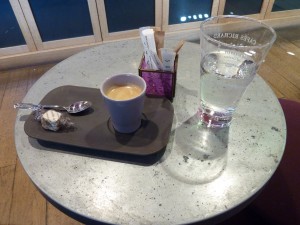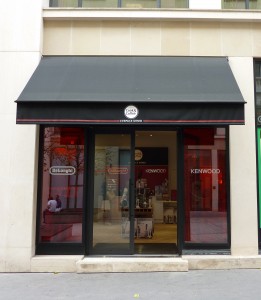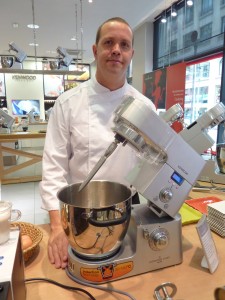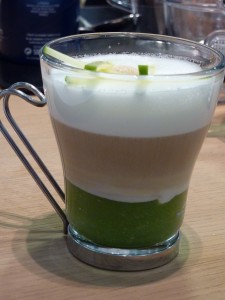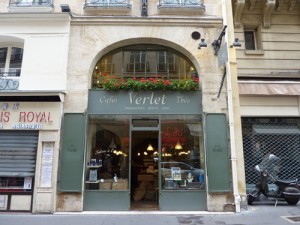France’s first Fête de la Gastronomie was held on September 23. Among the events at the festival were presentations on and tastings of cheese, chocolate, tea, beer, and coffee.
I wrote about the beer tasting in an earlier blog. In this article, I present my experience at one of the two coffee presentations that I attended. Both were given by Comptoirs Richard, a purveyor of fresh-roasted coffee with seven shops in Paris.
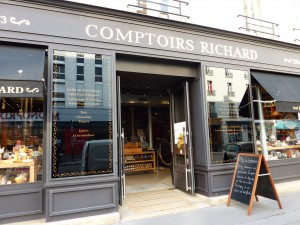
Comtoirs Richard 73, rue Lecourbe Paris
Photo by www.DiscoverParis.net
On the morning of the 23rd of September I went to the shop at 73, rue Lecourbe, located in the 15th arrondissement. There, I saw Yoann Linares load a 4kg batch of Guatemala Antigua coffee into his SASA SAMIAC coffee roaster. While the drum turned, Linares explained that when green coffee beans are received from the distributor, they contain about 12% to 15% humidity. It is the humidity in the beans during the roasting process that causes them to expand (they double in volume) and “crack” (make a cracking sound). The escaping hot water transforms the sugar and acids in the beans into aroma, a process called the Maillard reaction (named after the French chemist Louis-Camille Maillard, who discovered the phenomenon).
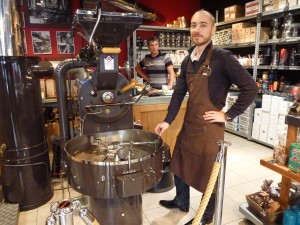
Yohann Linares Standing next to Sasa Samiac Roaster
Photo by www.DiscoverParis.net
Coffee roasting requires roughly twenty minutes, but that is only an estimate. During the process, Linares checks the quality of the roast by means of a scoop that catches the beans as they tumble in the drum. He withdraws the scoop and inspects the coffee. He explained to me that coffee will crack three times during the roasting process. For his coffee, he stops the roast after the second crack.
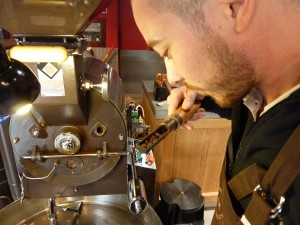
Checking the Quality of the Roast
Photo by www.DiscoverParis.net
After he determined that the roast was about ready, he turned off the heat and let the drum turn awhile. Then he opened a chute, allowing the hot beans to spill onto a cooling tray. Blades in the tray churned the coffee while a fan underneath forced cool air through the beans. The coffee was almost finished! He let the beans cool down and then placed them in a special bag with a valve that allows gasses to escape. After resting 24 to 48 hours, the coffee will be ready to sell to customers.
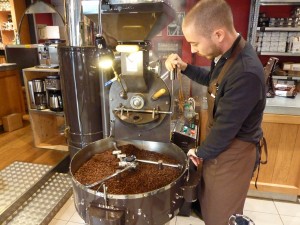
The Roasted Beans Spill onto the Cooling Tray
Photo by www.DiscoverParis.net
Linares showed me one of the roasted beans and pointed out the caramel-colored stripe that runs down the middle. This is a membrane (called, I believe, chaff or silverskin), and if the coffee is roasted correctly, the membrane has a golden color.
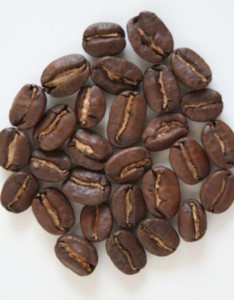
Roasted Coffee Beans Showing Silverskin in Crease
Photo by www.DiscoverParis.net
Linares broke open a bean and showed me the interior. I could see the golden membrane wrapped within.
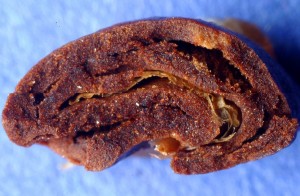
Cross Section of Roasted Coffee Bean
Photo courtesy of Willem J Boot - www.bootcoffee.com
At the end of the roasting demonstration, Linares showed me a scoop of green beans next to a scoop of the roasted ones.
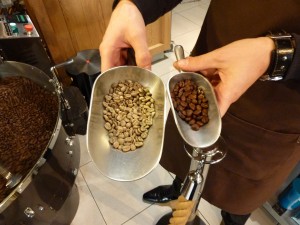
Before and After
Photo by www.DiscoverParis.net
I left the shop impressed by the careful attention that Comptoirs Richard gives to its coffee. It is especially notable that the coffee is roasted in small batches, a process that distinguishes it as a quality artisanal product.
As I was leaving, Linares mentioned that if I would look up at the façade next door, I would see the name of the original owner: J. Ladoux. It seems that one of the heirs of the Richard coffee company married a daughter of the Ladoux family (the owners of the Ladoux coffee company), thereby fusing the two companies into one. It was a matrimonial alliance worthy of royalty!
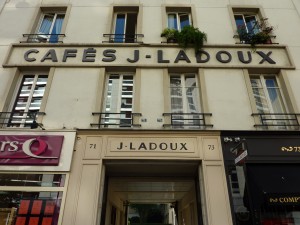
Façade of J. Ladoux
Photo by www.DiscoverParis.net

We participate in Wanderfood Wednesdays. Head over there to explore food from around the world!
Like our blog? Join us on Facebook!

